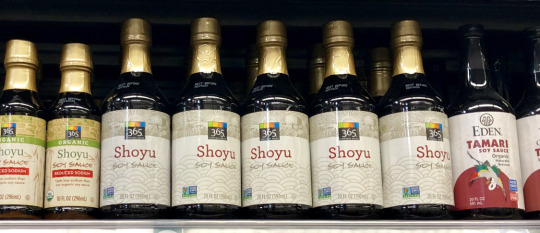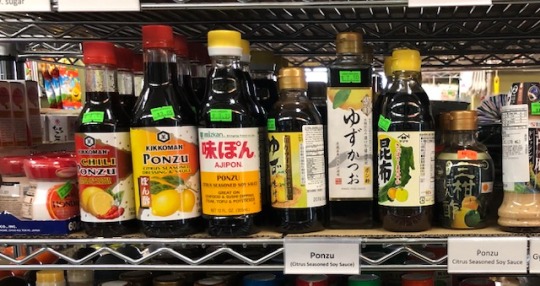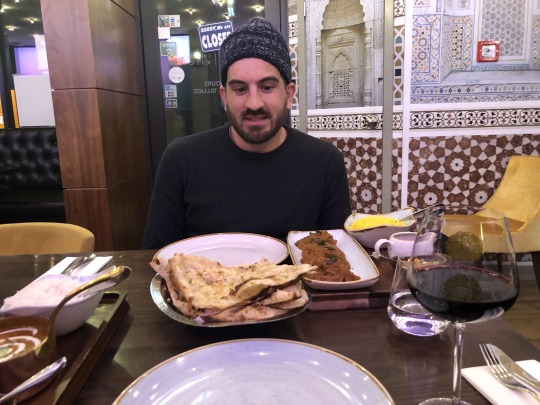#I demand a culturally appropriate steak
Explore tagged Tumblr posts
Text
Surrender, Denver. Here are our terms:
Denver migrants illegals sent Mayor Mike Johnston list of 13 demands as they refused to clear encampment, move into shelter

8 notes
·
View notes
Text
Using Amalfi Wedding Planner, how can one arrange a unique Jewish wedding in Tuscany?
In Italy’s Tuscany, history, passion, and culture all coexist peacefully amid breathtaking landscape. Imagine saying “I do” under the Tuscan sun surrounded by rolling hills, vineyards, and the appeal of medieval architecture. Now you have everything you need for a fantastic celebration when you mix this lovely location with the rich legacy of Jewish customs and skilled assistance from Amalfi Wedding Planner. This book walks through how to design a distinctive Jewish wedding in Tuscany that combines magic of this well-known location with custom. From picking the ideal location to including significant customs, every element is meticulously designed to guarantee that the union of love, legacy, and beauty will be one that will be remembered always.
Accepting Jewish customs
Understanding the desires and dreams of the couple can help one to design a Jewish wedding that complements their taste and respects custom. Leading this first discussion, the Amalfi Wedding Planner explores the significance of Jewish customs and ceremonies to the couple. Working with the couple and a seasoned rabbi, we make sure that, following Jewish tradition, every element of the ceremony meets their demands.

Selecting the ideal venue
From centuries-old houses to small farms to great estates, Tuscany’s varied terrain provides several breathtaking locations for weddings. Selecting the appropriate location for a Jewish wedding call for weighing beauty with usefulness.

Creating the Décor
Working with talented designers and florists, we develop a design concept that captures the tastes of the couple and Tuscany’s splendor. Incorporating traditional Jewish components like the chuppah, symbolic floral arrangements, and lit candles, they mix effortlessly with the general decor.
Inspired by the Tuscan countryside — shades of olive green, gentle blush, and warm terracotta — a color palette produces a charming, rustic atmosphere. These hues complement the surroundings, therefore accentuating the beauty of the scene and generating a harmonic and magical environment for the wedding.
Creating a Culinary Journey
Strong tastes and farm-to — — table cuisine abound in Tuscany. Working with talented caterers and chefs, Amalfi Wedding Planner develops a meal honoring Jewish dietary practices while highlighting the finest of Tuscan cuisine.
Along with Tuscan classics like ribollita (Tuscan bread soup) and bistecca alla Fiorentina (Florentine-style steak), the menu might include Jewish-style artichokes called carciofi alla giudia and Italian cuisine including salted fish, or baccalà. Every meal is created using locally grown, fresh foods, so honoring innovation and tradition in dining. Guests are presented to a feast combining the many tastes of Jewish background with Tuscan cuisine, so tantalizing their taste receptors.
Improving the Amusement
Jewish weddings feature dance and music, which give the celebration life and entertainment. Setting up live music or a DJ to mix Italian melodies with classic Jewish songs keeps attendees occupied all through the evening. Hiring professional dancers or entertainers will improve the celebrations even more, so the dance floor becomes an interesting and vibrant venue.
Organizing Logistics Perfectly
Coordinating a destination wedding calls for accuracy and flawless planning. Hiring Amalfi Wedding Planner guarantees that all logistics — from travel to lodging to vendor coordination — are deftly handled. Our experience helps the couple to completely enjoy their wedding day free from concern for the specifics.
Recording Infinite Events
To really capture the spirit of a wedding in Tuscany, one must make investments in quality photography and film. Experts in destination weddings and knowledgeable about the subtleties of Jewish ceremonies and Tuscany’s terrain are advised by Amalfi Wedding Planner to be hired. This guarantees that every lovely moment — from the grandeur of the venue to the couple’s sensitive exchanges — is preserved.
Conclusion
Arranging a distinctive Jewish wedding in Tuscany calls for love, careful preparation, imagination, and cultural awareness. Couples can enjoy a remarkable occasion honoring legacy while embracing the romanticism of this gorgeous place with the help of Amalfi Wedding Planner and the enchanted Tuscan scenery. Every moment, from the customary features of the ceremony to the exuberant celebration of the reception, offers chances to build lifelong memories.
Article Source :- https://medium.com/@albertrock702/using-amalfi-wedding-planner-how-can-one-arrange-a-unique-jewish-wedding-in-tuscany-cd4931ba0b40
0 notes
Text
Good Evening All
With the release of the 'Sonic' trailer, it feels appropriate to make a point. This is something I've been saying for years, but never has it felt more appropriate to be said en-masse to the internet.
This is the trailer for the 'Sonic' movie.
I want anyone who hasn't seen it to watch it right now. Anyone who has seen it before, maybe watch it again, just to get it fresh in your mind. And once you've watched it, answer me this: do you think this looks good?
The answer should be a resounding no. On every level this film looks terrible. It's a video-game movie (known to be notoriously god-awful). It's being directed and produced by the visionary mind behind 'Gopher Broke'. Slim rubberface comedian Jim Carrey has been cast as the tubby cartoon character of Dr Robotnik and is playing it exactly like Ace Ventura all over again. The design of Sonic is nightmarish beyond belief. And most famously, it's being produced by the brilliant mind behind 'The Fast And The Furious' series, a series of ELEVEN movies about things going zoom (and very little else).
And thus I get to the point of this little post. I want to ask each and every one of you... don't see this movie. I can't stop you, and if you want to see it, then you do that. I wouldn't dream of insisting on a boycott. All I'm asking is that you understand one thing: you think this movie looks shit? Great, I do too... and Paramount & Sega, the team behind this film, couldn't care less.
I hate to be a downer but this point needs to be made more and more these days. While movies like 'Avengers' are excellent and a lot of fun to watch, people need to remember that Disney doesn't care if you like it or not. They only care if you paid to see it. The same applies to Sega and Paramount making this film. You go see it, you hate it, you make a 20 minute Youtube review on how bad it is, do Sega-Paramount care? Fuck no, because you already gave them money. Did the film piss you off and make you insane with rage? Great, Sega-Paramount don’t give a fuck. Did the film teach you the meaning of life and finally make you smile? Great, Sega-Paramount don’t give a fuck. All they care about, like most media companies, is getting your money.
That's not to say creative thought and artistic vision are dead, because they definitely aren't. They've flourished in indie markets through people like Scott Cawthon and (despite my disdain for the series) the minds behind the 'Paranormal Activity' films. Artistic vision is alive and well, but let's be real, what most people care about is making money.
Posters can be misleading, and trailers can be deceptive. RedLetterMedia made the point��during their review of the 'Slenderman' movie nobody remembers that about 40% of the trailer wasn't in the actual film. And we're talking interesting things that looked cool, even an entire character vanished altogether from the movie. And there's a big difference between a trailer being edited differently from a movie, and flat-out lying to people to get them to give you money.
The point I'm making is that, bottom line, people want money. Companies need money to survive. Sega-Paramount don't want to make a good film, they want to make a financially successful film. They want to make a film that will rake in heaps and heaps of cash. So they used a pop-culture icon like Sonic, ripped off 90% of what the 'Detective Pikachu' trailers have shown us, and is attempting to make that money by either being consciously terrible or astoundingly naive.
Listen. Every time a terrible reboot / remake comes out, the comments around it are all the same: 'this looks awful, can't wait to see it!', or 'why isn't anything original anymore?', without realising that these two comments are answering each other already.
Guys, if this film looks as bad as you think it does, I beg you, please don't see it. All this will do is reinforce the thought that bad movies make money simply by being as bad as possible. If you want a good video-game movie, then let the bad video-game movies fail. If you want less remakes, then stop going to see them. The only reason these films keep coming out is because, like it or not, they keep making money. They keep churning in just enough profit to convince the studios to make more and try less with each installment. 'Robocop', 'Total Recall', 'Ghostbusters', 'Planet Of The Apes', 'The Italian Job'... all great films that were remade, and despite everyone agreeing the remakes were terrible, they still made money.
With the ‘Sonic’ movie, we may have a chance to break that cycle once and for all. This is a film that NOBODY wants to see. If people can just avoid seeing the film, we might finally be able to get the message through, that we’re sick of zero-effort nostalgia-pandering bullshit like this. DC finally realised it after making bomb after bomb, and thus turned out ‘Shazam’, a film they actually put effort into which wound up being a huge hit. They only had to learn through numerous failures, as is typical of any big company these days.
Look, if you go to a 5 star restaurant, order a sirloin steak, and get given a frozen microwave dinner instead, you have every right to complain and demand better service. It's no different with movies. If you get promised a good film, then you deserve a good film. If you get promised a bad film, then why would you bother to see it in the first place?
4 notes
·
View notes
Text
Soy Sauce: Salty Misconceptions
As an Asian American woman, I have grown to connect with and appreciate my heritage through food. While I enjoy fried chicken and steak, I also enjoy having a nice bowl of 牛肉面 (niu rou mian=beef noodle soup) and 米粥 (mi zhou= rice congee). Despite indulging in both American and Chinese cuisines, I was brought up with the notion that to have real Chinese food, one had to go to Asian grocery markets and Chinese restaurants. Simply put, going to Panda Express or Walmart was a sin in my house. For my anthropological fieldwork grocery project, I chose to investigate how soy sauce, a preconceived international food by Western consumers, is marketed on American shelves.
Soy sauce (shoyu in Japanese) originated in China roughly 2,200 years ago and is believed to have been introduced to Japan by a Buddhist monk in the mid-13th century (Stein and Shibata). It is made from soybeans, wheat, salt, and water that is fermented in a four year process. The ingredients are not the make it or break it of a good soy sauce, but rather its production environment. Traditional Japanese brewers use koike or specially crafted wooden vessels to ferment the soybeans. The grains of the wood enrich the millions of microbes that deepen the fermentation to produce a savory umami flavor.
However, most modern-day soy sauces are produced within stainless steel vats that shorten the multi-year fermenting process to just three months. Because the bacteria produced in koikes cannot survive in steel tanks, many commercial companies pump their soy sauces with additives like monosodium glutamate or MSG in order to keep up with the demand and production of soy sauce--something I would discover to be true during my project.

During the spring of 2019, I examined soy sauce brands across 4 grocery stores in the Washington, D.C. area. My research was conducted through participant observation, which involves walking around the store as a potential customer and observing the ambiance of the store and its customers, while taking note of the location and sensory details of the soy sauce options offered. I conducted optical research as I observed my surroundings without personal interviews. Over the course of a semester, I learn that soy sauce, in its labeling and aisle surroundings, has been modified to fit into Western perceptions of Asian cuisine--revealing deeper connotations behind its ingredients and authenticity.
My first store visit was at the Whole Foods Market in the Foggy Bottom campus of the George Washington University. I paid close attention to the logos of each brand, nitpicking the logos for its embodiment of Asian culture through symbols like bamboo shoots and cranes. I later observed the design was not the most striking element, but rather the emphasis on reduced sodium and non-GMO ingredients.
Every bottle addressed it through writing, logos, or both. Health reasons aside, I came into this project with a preconceived notion that buying soy sauce from an American grocery store equated to not only buying from a market that addressed negative connotations of an Asian cuisine but also one that implied Chinese manufacturers were careless for placing MSG in their products.
Talk of Asian cuisine being too salty or not healthy for consumers was rarely discussed in my family nor did Asian food markets I went to as a child address it in the labelling. Seeing this language on American-brand soy sauce bottles made me feel culturally isolated as someone who had Chinese food almost every day of her life.

I visited Hana Japanese Market to see if the same language of reduced sodium appeared on its bottles. Hana Market is on the first floor of a quaint gray townhouse in a quiet neighborhood on U Street. I not only found Japanese-imported soy sauce on the bottom shelf, but also the American brands with reduced sodium and non-GMO stickers were on the shelf above. I was shocked to see the overall bottom placement of a renowned Japanese seasoning staple.
I wondered if it was because Hana’s store owners tailored their products towards the perceptions of Western customers--fully aware that MSG was a health concern and they had made efforts to address it. They even printed out English labels that said reduced sodium for the bottles written in Japanese. On an eye-level shelf, Hana offered ponzu or citrus “seasoned” (not flavored) soy sauce. I had never heard of ponzu until this site visit. To see traditional and authentic Japanese products at Hana made me feel more part of the Japanese culture and where we were borrowing this Asian cuisine from.

Visiting Safeway and Streets Market was a pivotal point in my research. The Safeway I visited in Georgetown was a superstore that focused on convenience and value. However, I was quickly appalled by the selection of soy sauces at Safeway. The soy sauces at Safeway were found in the “Asian/International” section. In the collage below, Safeway had big jugs of soy sauce that reminded me of gallons of gasoline. All options had cheap prices of $2-4. While the prices were tempting, La Choy proved that the quality was not worth it.
The bottle said “Inspired by Traditional Asian Cuisine”, yet its ingredients of hydrolyzed soy protein, corn syrup, caramel coloring, and potassium sorbate (a preservative) were quite the contrary. Might I add it was also produced in Omaha, Nebraska. After seeing the natural and traditionally brewed bottles that Whole Foods and Hana offered, La Choy was an insult to the traditional Japanese soy sauce brewers and the Asian culture itself.

Streets Market revealed a different connotation to how soy sauce was marketed. The store was located in a busy part of D.C., near the border of the Northeast sector. Prices at Streets were sky-high, yet the instant ramen noodles and ready-made “Asian” meals surrounding the soy tiny bottles of soy sauce did not portray Asian food as appealing. Streets perceived Asian food as an on-the-go and quick bite rather than a cuisine to be appreciated.
Perhaps this perception was why it took me 3 stores to locate a place with more than one type of soy sauce. Prior to Streets, I visited Trader Joe’s, Dean & DeLuca, and GWU’s Gallery Market only to discover they had one option. A bottle of soy sauce is not something to be consumed in a day, but I expected more variety. After my visit at Streets, with its array of plastic bowled and preservative-filled instant noodles, perhaps the purpose of soy sauce to Western consumers was nothing more than just a condiment that was put on things to make them saltier.

I went back to the Foggy Bottom Whole Foods for my final site report and was glad to see the wide selection of soy sauces with no worries of added preservatives. It gave me a greater appreciation for the store’s strides towards lower prices and high quality standards.
Above all, the Asian culinary identity was present in its surroundings and labelling. The International aisle lived up to its name as the soy sauce was next to Asian ingredients rather than instant bowls of ramen. Offering actual ingredients encouraged customers to make Asian dishes themselves, allowing for a greater appreciation of the Asian culture they are consuming. The labelling of bottles like San-J educated customers on the usage and meaning behind soy sauce.

My fieldwork has lead me to draw two conclusions on the implications surrounding the culture of Asian food in America. First, Asian cuisine is modified to fit the tastes of the” average American consumer”. Dishes like Kung Pao or General Tso’s chicken would never be found in China. When Panda Express was established in 1983, the Cherng family knew it would be difficult to for mainstream American customers, especially outside of metropolitan areas, to accept a Chinese dish in its original form and flavor (Liu, 138). Although its original flavor was salty and spicy, Andrew Cherng invented a new sweet and spicy orange sauce for chicken which allegedly came from Hunan cuisine in South China.
In addition, the famous P.F. Chang’s restaurant chain was named after restaurateurs Peter Flemming (PF) and Philip Chiang. However, “Chiang” was purposely changed into “Chang” in order to make the brand less foreign to the American public (Liu, 130). For many years, authentic Chinese food has had no market in America--pointing to a dangerous conception among many Americans that Chinese product owners are not in control of their own culture in the American food market. At the same time, food is both a culture and commodity. When food becomes a commodity, it is no longer an inherited culture as corporate America can easily appropriate it from the Chinese community (Liu 135).
Second, the use of MSG instead of soybeans in soy sauce points to a loss of authenticity in Japanese culture. The health dangers of replacing soybeans with artificial flavoring first occurred in the mid 20th century when Chairman Mao seized control of China in 1949. Perceptions of the Chinese changed as they were seen as threatening to US democracy. The association between Chinese food and health problems was an easy connection for Americans to adopt the Chinese Restaurant Syndrome or CRS (Germain, 2). People complained of having numbness in the back of the neck that gradually carried through the arms and back, leading to overall weakness.
CRS confirmed a pre-existing unease regarding the Chinese people during that time. Although MSG is also commonly used by manufacturers of processed foods like Doritos and KFC, it is inextricably tied to Chinese food. The consequences of CRS remain today, as demonstrated in my research, virtually almost all soy sauce bottles in the US have some sort of reduced sodium or no-MSG identification.
This project has taught me to appreciate the authenticity rather than the convenience of an international food. Culinary culture is a public domain in where everyone has the right to access or own it. Yet grocery stores need to remember that culture cannot be separated from tradition. It has to be respected. From the item’s placement in a store and on shelves, to its surroundings and design, more stores need to pay tribute to the culture from which their products migrate. Essentially, mixing caramel coloring, preservatives, and water is not Asian cuisine. And on that salty note, I sign off.
-- Caitlyn Phung
References
Liu, H. (n.d.). Who Owns Culture? In From Canton Restaurant to Panda Express: A History of Chinese
Food in the United States (pp. 128-145). Rutgers University Press.
Germain, Thomas. A Racist Little Hat: The MSG Debate and American Culture. Columbia Undergraduate Research Journal. 2017; 2:1. doi: 10.7916/D8MG7VVN
Stein, E., & Shibata, M. (2019, February 26). Is Japan losing its umami? Retrieved April 20, 2019,
from http://www.bbc.com/travel/gallery/20190225-a-750-year-old-japanese-secret
#authenticity#tradition#resepct#culinarycuisine#education#empowerment#encourage#commodity#MSG#reducedsodium#healthy#glutenfree#marketing#surroundings#aisles#international#asianfood#asian#Japanese#Chinese#cuisine#soysauce#soy#365#WFM#WholeFoods#foggybottom#gwu#HanaMarket#Safeway
5 notes
·
View notes
Text
Vittles Village: Feeding a Hungry Ghost
What’s up foodies?
Last time I thought I fed you so well you’d keel over and leave me be for good! But nope, your insatiable appetite haunts me. So, I will conduct this ritual once again to appease your hungry spirit. I have previously shown you dishes from the Western world. However, I thought maybe shaking it up and trying something new would help more. I took a deep dive within myself and had a vision. I saw a pagoda and felt compelled to move toward it. Before I knew it, the moment had passed and I found myself on a mountain top. I was sitting crisscross and practicing breathing exercises to cope with your greedy belly. I hit an epiphany. I realized that the only way I could wrestle with your demands was by serving up some Chinese beef stir fry!
The Beef
Listen, if you ever want to truly satisfy your appetite you need to have some discipline. Don’t look at me, look within yourself to solve this conflict. Let me help you with some of the principles of Taoist cognitive therapy that I learned at the pagoda. To get to the root of your difficult hunger you must consider benefitting without harm, limiting possessions and moderating desire, know harmony and be modest, and know when it is enough and when to stop! Okay, that sounds harsh but truly, if your hungry self was there on the mountain with me then you unfortunately would have seen the cows grazing below. You’d say, “I want the most tender and juicy cut from the best cow down there.” I’m afraid that just simply wouldn’t be culturally acceptable. See, in Chinese history you could be put six feet under for slaughtering healthy cattle. It wasn’t even appropriate for emperors to consume beef at times. Therefore, in the occasions that the delicacy was permitted to be cooked and eaten it was done so carefully and out of appreciation. So, remember those principles and you’ll still have your hide before the cow loses theirs.

Prepping and Frying
Now that we’re lucky enough to have some beef I want to give you some tips on how to prepare it. Remembering that this recipe stems from an interdependent culture, pieces of beef and vegetables should be cut so that they are the same or as close to the same. This means that thin slabs of steak, carrots, peppers, and onions should be cut to relatively the same shape and size. In this way, snow peas make for a great match in this dish. Broccoli is a great addition as well but its shape is sort of set at the broccoli kind of shape. It should also be known that this style of preparing ingredients reflects the holistic aspect of Eastern culture in that the similarities between parts of the dish make it harmonious.
The frying process is quick and there are reasons for that. First, however, understand that beef stir fry is not a sauté. In a sauté smaller amounts of oil are used in comparison to stir fry. Sometimes the amount of oil in a sauté is so small that it is considered a dry-heat way of cooking. Therefore, this alternative to stir fry is a quicker process and reflects the reductionist view of culture seen more in Western/ independent cultures. Reductionism says that our world and culture is understood through reducing complexity down to seemingly fundamental elements. In contrast, stir fry does not involve as much elimination and isolation of its contents. Now, in comparison with many other styles of cooking, stir frying is still a very quick process. The cultural and traditional reasoning behind this is that cooking food quickly conserves fuel.
Thus far, beef stir fry requires appreciation and conservation and avoids elements that stick out to a large extent. This is exactly the kind of meal that you need. As it appears that you have been reborn as a hungry ghost, from one of the six realms of Buddhism, beef stir fry will cure your greed and lust for my cuisine yet!
Stir It Up!

To express my personal opinion for just a second, stirring is my favorite part of beef stir fry. It also happens that stirring is a crucial step in this recipe. Though making beef stir fry is a fairly easy-going process, one is not intended to be inactive or relax per se. The stirring is very much a conscious effort to direct attention in a non-analytic way. This is much the same in how an individual may meditate, especially with regard to concentration meditation, which is the development of one-pointedness through limiting awareness to one stimulus. So, if there’s one thing you should prioritize in beef stir fry its stirring. Say it like a mantra, “stir… stir… stir,” and you’ll even get that humming effect that’ll hopefully free your poor starving spirit.

Don’t Be a Hungry Ghost Please
As you feast your eyes on my finished product, I advise you of a couple things: a. don’t be too jealous b. know the four noble truths derived from those Buddhists who likely enjoy this meal routinely…
1. The first noble truth, also known as Dukkha, says that life is suffering.
--Translation, you’re always hungry.
2. The second noble truth says that suffering comes from our attempt to cling to what we believe will give us release from fear.
--Translation, cook too many burgers and you’ll realize how much you’re counting down until its chow time.
3. If we stop clinging to what we believe will release us from fear we will then truly be relieved from suffering.
--Translation, keep calm and make beef stir fry. Don’t stare at the burger. Stir the beef.
4. The true way to let go is to practice the Noble Eightfold Path.
--In other words, stir it Right.
Sources:
https://www.travelchinaguide.com/chinese-beef-recipes.htm
https://culinarylore.com/cooking-terms:what-is-a-stir-fry/
https://scholars-stage.blogspot.com/2014/06/chinese-cookery-notes-on-history-of.html
1 note
·
View note
Text
What Can Chipotle Teach Us About Mexican Food?

White-centered food narratives appear most often at major chains. It’s time to hold them accountable.
I’m a professional chef, and up until three years ago, I had no idea what barbacoa really meant.
I thought I did. I’d eaten my fair share of “barbacoa” at Chipotle, where its shredded-beef burrito was my splurge order. But on a tour of Xochimilco, a tapestry of canals and artificial islands that was once a major source of local produce for Mexico City, Paco, my tour guide, took me to his favorite barbacoa stall, where we were greeted with three juicy tacos and a bowl of lamb broth to wash it all down. When I mentioned that I’d thought barbacoa was only beef, he gave me a quizzical look: “Oh yeah? Where have you been eating barbacoa?”
As a chef, I was a little embarrassed by my lack of knowledge. But as someone deeply convinced that food is an extension of identity, who has experienced first-hand the harmful impacts of stereotypes seeping into cultural norms and is now actively working toward changing them, I was horrified at how easily I accepted something completely stripped of cultural context sold to me by a chain.
But such is the world of giant quick-service and fast-casual business: Find interesting, “trendy,” flavorful ideas from any culture, dilute them into their most mass-marketable forms, and reap monetary gain without acknowledging the sources. Although these chains, due to sheer size and reach, are often representing certain dishes or cuisines to large swaths of people — sometimes for the first or only time — they do very little to contextualize the foods they serve. So far, these companies have experienced little pushback and are under no compulsion to change. But as we reckon with the complicated intersection of social and political structures behind food, we have an opportunity to demand a very different future for fast casual.
Barbacoa’s history is a fascinating case study of Caribbean “barbecue” (aka barbacoa) evolving as it moved through Mexico, where lamb or mutton would be wrapped in maguey leaves and steamed underground, and into Texas, where cattle heads were substituted for sheep due to regional availability. It is a laborious process, hence why devotees happily line up for chefs they believe can work magic in the meat, like Cristina Martinez of Philadelphia’s South Philly Barbacoa.
While the final shredded texture of beef barbacoa may resemble that of Chipotle’s “slow-cooked beef combined with water” — as it’s described by Chipotle’s culinary director, Chad Brauze — it comes nowhere close to representing barbacoa technique. In calling this filling “barbacoa,” a sharp contrast to its straightforward “chicken” and “steak,” Chipotle has found an easy way to add a marketable tinge of foreignness to its menu to back up its cred as a “Mexican” grill.

This is not to say food can’t, or shouldn’t, evolve. The very core of food culture is adaptation to new environments, new palates, new people, new ingredients — and these exchanges are not always peaceful or mutually beneficial. Barbacoa has changed over time to include beef as a common protein choice, Spam musubi is now a well-loved Hawaiian staple, and so forth — but ignoring history in search of “approachability” only serves to entrench distorted power dynamics that persist to this day.
As barbacoa becomes another “familiar” option on the steam table, we must examine who has the power to force the process of adaptation and assimilation for profit, and who does not. In the case of food, all that PR fluff about bringing people together completely misses — or perhaps purposefully conceals — the truth that with power, the food of another culture can become a mere commodity, a cog in the wheel of capitalism separate and distinct from the people closest to it.
At $4.9 billion in revenue and close to 2,500 locations as of 2018, Chipotle’s influence is undeniable. “One of the best things about Chipotle is our reach ... in many diverse communities throughout the United States and beyond,” Brauze said in an email. Yet when it comes to educating this diverse audience — some of whose view of “Mexican” food has been shaped specifically by Chipotle’s interpretation — he deflects observations of the chain’s responsibility. “We hope that all people will arm themselves with a greater knowledge of where their food comes from, what ingredients are utilized, and how it’s prepared.”
Maybe it is too much to expect a giant company like Chipotle, run by a primarily white C-suite and most famed for an efficient assembly line, to provide an anthropological perspective for each dish. But what is the inflection point of scale and profit where accountability also sets in, whether it feels “fair” or not?
Nomenclature is arguably the most visible — and therefore hotly contested — aspect of food representation. To have the ability to name something is power, and to proliferate that name widely is influence. At Noodles & Company, with 460 locations and a revenue of $458 million in 2018, dishes are titled “Japanese Pan Noodles” or “Spicy Korean Beef Noodles,” harking back to a likely inspiration (yakisoba) or arbitrary ingredient choice (gochujang). It’s easy to assume these are the results of a flippant naming process, but they’re in fact quite deliberate; as the chain’s executive chef, Nick Graff, explains, names are determined after conducting “online screening tests and taste panels where guests can tell us what naming convention best represents their expectations once they have experienced the dish.”
Consumers do not produce these flattened, generic names in a vacuum. It’s a result of centuries of blurring and erasure of geographic, historical, and cultural nuance, socialized into an idea that “other” places are more homogenous and less important. Consistent exposure to governmental and corporate propaganda has reduced vast regions like “Asia,” “Africa,” and “the Middle East” into amorphous descriptors barely varied enough to distinguish, their differences of little regard, and the essence of their cuisine easily distilled into a few fried wonton strips or a pinch of garam masala.
Generic menu names are the result of centuries of erasure of geographic, historical, and cultural nuance.
Within this self-reinforcing cycle, it’s unsurprising to see examples like Wendy’s limited-run “Asian” Cashew Chicken Salad, a riff on “Chinese” chicken salad that conflates China with Asia and disregards its complicated roots in assimilation and cultural adaption. (Wendy’s declined to comment for this story.) Even a trip to the grocery store yields similar findings: Enter Trader Joe’s painfully stereotyped Trader Ming’s line, which sells blurry pan-Asian items like Kung Pao Tempura Cauliflower in a package accentuated by a “Chinese”-ish font. (Recently, Trader Joe’s vowed to rebrand its “ethnic” lines, but has since reversed course.)
It’s easy to dismiss these collective occurrences as a byproduct of capitalism, to make excuses for the middle managers who aren’t willing to risk their own necks to push back. But food has always been entrenched in Western colonization, imperialism, and enslavement, and it continues to shape (and change) public opinion. The way we allow these national and international chains to treat a food culture implicitly shows the respect (or lack thereof) we have for the people represented by these cuisines — and it is with this backing that appropriative, white-centered food narratives can take place.
For instance, Google searches for “Nashville hot chicken” jumped from an interest index of 4 to 100 after KFC released its version in January 2016, with the New Yorker calling it a “viral sensation.” Yet no part of KFC’s marketing includes a mention of Prince’s, where the dish originated. (KFC declined to comment for this story.) The chasm left by KFC’s silence gives way to a very different, white narrative. Within the year, Food Republic treated the African-American soul of hot chicken as a mere footnote: “Prince’s Hot Chicken Shack may have created hot chicken in the 1930s ... but Hattie B’s has made hot chicken cool,” it said of a newer hot chicken contender in Nashville, after calling Hattie B’s chef “the man who launched the Nashville hot chicken craze.”
This erasure of foodways has further manifested in disasters like “pho gate,” where Bon Appétit anointed a white male chef as the expert on pho, allowing him to bend the narrative of an iconic Vietnamese dish with his own “rules”; Andrew Zimmern’s restaurant Lucky Cricket, where the celebrity chef insulted “horseshit” Chinese restaurants to tout his own “authenticity,” ignoring the foundation laid by early Chinese restaurateurs adjusting to an American palate and subsequent creation of a distinct Chinese-American cuisine; and Kooks, the Portland, Oregon, burrito cart whose two young female entrepreneurs proudly admitted to snooping their way into the intellectual property of “tortilla ladies” in Puerto Nuevo, Mexico, in order to profit off of their techniques back home.
These are far from the only times Black culture has been co-opted or immigrants’ contributions dismissed. But the stakes are now higher than ever. Stripping food from its undoubtedly political history in order to offer a sanitized version digestible by the majority allows for the frightening notion that minorities are separate and distinct from what they offer to the country. It suggests that after “we” as Americans have harnessed what we want from them, those people can be discarded.
Protesters shouted at Kirstjen Nielsen for dining at a Mexican restaurant after escalating the “zero tolerance” immigration policy in 2018, but her actions are eerily consistent with those of her predecessors. In the 19th century, Chinese restaurants were lauded as having some of the best food in the country; in spite of that, anti-Chinese political rhetoric was widespread enough to pass the 1882 Chinese Exclusion Act — after Chinese laborers had been hired specifically to construct the most hazardous points of the transcontinental railway — which was not repealed until 1943.

How and when foods and cultures are embraced by a historically white-dominant America has had hefty implications. Without racial, socioeconomic, and political power, without the right “image,” ideas command little value — at most they are trendy, at worst “indecent” or even “criminal” if embraced by the minority. But demographics are changing: According to the Brookings Institute, at 45 percent minority, millennials are the most diverse adult generation in U.S. history (Gen Z will be even more so), and this presents an opportunity to push back on problematic nomenclature and representation.
If the actions of these big companies have demonstrated anything, it is that there is power in numbers. It is up to our generation to scrutinize these brands, whose reach permeates our lives on the daily, whose executives (inaccurately) treat America as though they are as white as they are, whose menus and messaging influence the next wave of restaurateurs and food entrepreneurs. One start would be for Chipotle to consider an accurate rebranding of its barbacoa to “shredded beef.”
To light the way, a new wave of fast casuals is actively changing the status quo. For these restaurateurs, the first step has been to hold their own menus accountable.
“A big issue we faced as operators [of a healthy Indian concept] was finding a way to meet consumers midway with their vision of Indian food and what we wanted to present them with,” explains Viraj Borkar, co-creator and culinary director of Inday, an Ayurvedic-based Indian chain. Now in its fifth year, Inday has learned its own lessons: a smooth chickpea puree originally called “chickpea masala” went through a sequence of name changes so as to not misrepresent it to those unfamiliar. (Now it’s no longer on the menu.) The “cauliflower biryani” was further clarified to give the backstory of biryani while explaining the Inday version as non-traditional, with its base of “cauliflower ‘rice’” now available separately on the menu. Borkar stands by the statement that “it is the fast casual’s job to educate people and give clarity” on what it is offering, which sometimes means the company needs to scrap a product causing more harm than good, and start over.
Lucas Sin, a 2019 Eater Young Gun and the culinary director of Junzi, a Chinese fast-casual chain, emphasizes this notion of education with the prevalent use of Chinese characters throughout his menu. No one dish is titled as if it represents a region, even if the flavor combinations may hail from one, and unfamiliar ingredients are deliberately not renamed so guests must actively learn what they are. Finding a balance between the “60 seconds or so” guests take to assess the menu and the terminology he deems important to promote has not been easy. Furu tofu, for example, a lacto-fermented type of tofu unfamiliar to most American consumers, is used throughout the menu and elicits questions, which Junzi’s staff is trained to answer thoroughly.
“The future of fast casual is not to tell people, ‘This is what you should eat because that’s what’s affordable.’”
“[One of the few terms] we’ve ever made up is our Jaja sauce,” Sin says. Because the Junzi sauce resembles the classic zha jiang sauce in flavor, but doesn’t have the ground pork component, he opted to create a phonetically similar word for it.
It is possible to reset the framework for making and serving foods from other backgrounds, too. Sofia Luna, president of Sophie’s Cuban, a Cuban fast-casual chain, hails from Lima, Peru, but saw that Cuban food was particularly popular among the Latinx community in the Financial District, where her family first started operating food stands. To open the restaurant, they brought on Cuban chef Eduardo Morgado to create the menu (with most items still available today) not just as a consultant or research and development chef, but an active owner of the business.
In particular, Luna has paid attention to the implications of naming: “If something is tweaked or modified, we want to be transparent with our customer. Our ‘Pernil with a Twist’ was named that way to ensure customers knew they were not getting a traditional pernil sandwich.”
Chef JJ Johnson of Field Trip, a rice-centered fast-casual restaurant with two locations in New York City, sees menus as a way to celebrate and expand, not marginalize, consumer perceptions of its roots by providing cultural context. As the menu spans many cuisines, from a loosely Thai-inspired sticky rice shrimp dish with green curry (simply titled “Shrimp”) to a jollof-style basmati rice bowl (“Veggie”), Johnson is adamant that “every culture deserves specificity” and “we don’t call something for a selling point, like ‘The Jamaican Bowl,’ because that’s just lazy.”
“Take jollof, for example,” he explains, “it’s a tomato-based rice, and jollof is about the preparation of the rice. The inspiration of the overall bowl [Veggie] comes from India. It’s somewhat similar to biryani [the bowl uses basmati rice]. We have a map showing people where the rice is from, and we lead with service by explaining the technique behind the rice. So if someone asks for ‘Spanish rice,’ we can say, ‘What kind of Spanish rice?’ and show them how there are styles, and there are regions.” By using straightforward language accented with in-person dialogue, Johnson is demonstrating that no restaurant “has” to lean on tired tropes to express flavor.
And it’s working: All of these fast casuals have seen steady engagement from customers since opening, disproving the idea that consumers exclusively care about convenience. The owners attribute part of this brand loyalty to their larger commitment to raising conscientiousness and increasing community access to new foods and food cultures. “Every community needs some sort of impact structure to improve,” Johnson says. “I opened in Harlem because I was tired of people telling Black and brown folks that we don’t care about what we eat. The future of fast casual is not to tell people, ‘This is what you should eat because that’s what’s affordable,’ it’s where you can understand your food, where someone can talk to you about it, where you want to try new things and expand what you know.”
These varied dishes all contribute to the growing tapestry of American cuisine, a multi-dimensional story of adaptation, innovation, and survival. Increasing a restaurant’s reach or volume does not entitle operators to shirk the responsibility of explaining the very complexities its foods are based on. Instead, we can embrace learning about food as a natural part of the eating process, each meal an opportunity to deepen our understanding of ourselves and each other.
Jenny Dorsey is a professional chef, writer, and the founder of Studio ATAO, a nonprofit community think tank working at the intersection of food, art, and social impact. Bug Robbins is a non-binary queer illustrator obsessed with printmaking, folklore, and green witchcraft. Edited by Rachel Kreiter Fact-checked by Andrea López-Cruzado
from Eater - All https://ift.tt/33wNu2R https://ift.tt/3iCMTB8

White-centered food narratives appear most often at major chains. It’s time to hold them accountable.
I’m a professional chef, and up until three years ago, I had no idea what barbacoa really meant.
I thought I did. I’d eaten my fair share of “barbacoa” at Chipotle, where its shredded-beef burrito was my splurge order. But on a tour of Xochimilco, a tapestry of canals and artificial islands that was once a major source of local produce for Mexico City, Paco, my tour guide, took me to his favorite barbacoa stall, where we were greeted with three juicy tacos and a bowl of lamb broth to wash it all down. When I mentioned that I’d thought barbacoa was only beef, he gave me a quizzical look: “Oh yeah? Where have you been eating barbacoa?”
As a chef, I was a little embarrassed by my lack of knowledge. But as someone deeply convinced that food is an extension of identity, who has experienced first-hand the harmful impacts of stereotypes seeping into cultural norms and is now actively working toward changing them, I was horrified at how easily I accepted something completely stripped of cultural context sold to me by a chain.
But such is the world of giant quick-service and fast-casual business: Find interesting, “trendy,” flavorful ideas from any culture, dilute them into their most mass-marketable forms, and reap monetary gain without acknowledging the sources. Although these chains, due to sheer size and reach, are often representing certain dishes or cuisines to large swaths of people — sometimes for the first or only time — they do very little to contextualize the foods they serve. So far, these companies have experienced little pushback and are under no compulsion to change. But as we reckon with the complicated intersection of social and political structures behind food, we have an opportunity to demand a very different future for fast casual.
Barbacoa’s history is a fascinating case study of Caribbean “barbecue” (aka barbacoa) evolving as it moved through Mexico, where lamb or mutton would be wrapped in maguey leaves and steamed underground, and into Texas, where cattle heads were substituted for sheep due to regional availability. It is a laborious process, hence why devotees happily line up for chefs they believe can work magic in the meat, like Cristina Martinez of Philadelphia’s South Philly Barbacoa.
While the final shredded texture of beef barbacoa may resemble that of Chipotle’s “slow-cooked beef combined with water” — as it’s described by Chipotle’s culinary director, Chad Brauze — it comes nowhere close to representing barbacoa technique. In calling this filling “barbacoa,” a sharp contrast to its straightforward “chicken” and “steak,” Chipotle has found an easy way to add a marketable tinge of foreignness to its menu to back up its cred as a “Mexican” grill.

This is not to say food can’t, or shouldn’t, evolve. The very core of food culture is adaptation to new environments, new palates, new people, new ingredients — and these exchanges are not always peaceful or mutually beneficial. Barbacoa has changed over time to include beef as a common protein choice, Spam musubi is now a well-loved Hawaiian staple, and so forth — but ignoring history in search of “approachability” only serves to entrench distorted power dynamics that persist to this day.
As barbacoa becomes another “familiar” option on the steam table, we must examine who has the power to force the process of adaptation and assimilation for profit, and who does not. In the case of food, all that PR fluff about bringing people together completely misses — or perhaps purposefully conceals — the truth that with power, the food of another culture can become a mere commodity, a cog in the wheel of capitalism separate and distinct from the people closest to it.
At $4.9 billion in revenue and close to 2,500 locations as of 2018, Chipotle’s influence is undeniable. “One of the best things about Chipotle is our reach ... in many diverse communities throughout the United States and beyond,” Brauze said in an email. Yet when it comes to educating this diverse audience — some of whose view of “Mexican” food has been shaped specifically by Chipotle’s interpretation — he deflects observations of the chain’s responsibility. “We hope that all people will arm themselves with a greater knowledge of where their food comes from, what ingredients are utilized, and how it’s prepared.”
Maybe it is too much to expect a giant company like Chipotle, run by a primarily white C-suite and most famed for an efficient assembly line, to provide an anthropological perspective for each dish. But what is the inflection point of scale and profit where accountability also sets in, whether it feels “fair” or not?
Nomenclature is arguably the most visible — and therefore hotly contested — aspect of food representation. To have the ability to name something is power, and to proliferate that name widely is influence. At Noodles & Company, with 460 locations and a revenue of $458 million in 2018, dishes are titled “Japanese Pan Noodles” or “Spicy Korean Beef Noodles,” harking back to a likely inspiration (yakisoba) or arbitrary ingredient choice (gochujang). It’s easy to assume these are the results of a flippant naming process, but they’re in fact quite deliberate; as the chain’s executive chef, Nick Graff, explains, names are determined after conducting “online screening tests and taste panels where guests can tell us what naming convention best represents their expectations once they have experienced the dish.”
Consumers do not produce these flattened, generic names in a vacuum. It’s a result of centuries of blurring and erasure of geographic, historical, and cultural nuance, socialized into an idea that “other” places are more homogenous and less important. Consistent exposure to governmental and corporate propaganda has reduced vast regions like “Asia,” “Africa,” and “the Middle East” into amorphous descriptors barely varied enough to distinguish, their differences of little regard, and the essence of their cuisine easily distilled into a few fried wonton strips or a pinch of garam masala.
Generic menu names are the result of centuries of erasure of geographic, historical, and cultural nuance.
Within this self-reinforcing cycle, it’s unsurprising to see examples like Wendy’s limited-run “Asian” Cashew Chicken Salad, a riff on “Chinese” chicken salad that conflates China with Asia and disregards its complicated roots in assimilation and cultural adaption. (Wendy’s declined to comment for this story.) Even a trip to the grocery store yields similar findings: Enter Trader Joe’s painfully stereotyped Trader Ming’s line, which sells blurry pan-Asian items like Kung Pao Tempura Cauliflower in a package accentuated by a “Chinese”-ish font. (Recently, Trader Joe’s vowed to rebrand its “ethnic” lines, but has since reversed course.)
It’s easy to dismiss these collective occurrences as a byproduct of capitalism, to make excuses for the middle managers who aren’t willing to risk their own necks to push back. But food has always been entrenched in Western colonization, imperialism, and enslavement, and it continues to shape (and change) public opinion. The way we allow these national and international chains to treat a food culture implicitly shows the respect (or lack thereof) we have for the people represented by these cuisines — and it is with this backing that appropriative, white-centered food narratives can take place.
For instance, Google searches for “Nashville hot chicken” jumped from an interest index of 4 to 100 after KFC released its version in January 2016, with the New Yorker calling it a “viral sensation.” Yet no part of KFC’s marketing includes a mention of Prince’s, where the dish originated. (KFC declined to comment for this story.) The chasm left by KFC’s silence gives way to a very different, white narrative. Within the year, Food Republic treated the African-American soul of hot chicken as a mere footnote: “Prince’s Hot Chicken Shack may have created hot chicken in the 1930s ... but Hattie B’s has made hot chicken cool,” it said of a newer hot chicken contender in Nashville, after calling Hattie B’s chef “the man who launched the Nashville hot chicken craze.”
This erasure of foodways has further manifested in disasters like “pho gate,” where Bon Appétit anointed a white male chef as the expert on pho, allowing him to bend the narrative of an iconic Vietnamese dish with his own “rules”; Andrew Zimmern’s restaurant Lucky Cricket, where the celebrity chef insulted “horseshit” Chinese restaurants to tout his own “authenticity,” ignoring the foundation laid by early Chinese restaurateurs adjusting to an American palate and subsequent creation of a distinct Chinese-American cuisine; and Kooks, the Portland, Oregon, burrito cart whose two young female entrepreneurs proudly admitted to snooping their way into the intellectual property of “tortilla ladies” in Puerto Nuevo, Mexico, in order to profit off of their techniques back home.
These are far from the only times Black culture has been co-opted or immigrants’ contributions dismissed. But the stakes are now higher than ever. Stripping food from its undoubtedly political history in order to offer a sanitized version digestible by the majority allows for the frightening notion that minorities are separate and distinct from what they offer to the country. It suggests that after “we” as Americans have harnessed what we want from them, those people can be discarded.
Protesters shouted at Kirstjen Nielsen for dining at a Mexican restaurant after escalating the “zero tolerance” immigration policy in 2018, but her actions are eerily consistent with those of her predecessors. In the 19th century, Chinese restaurants were lauded as having some of the best food in the country; in spite of that, anti-Chinese political rhetoric was widespread enough to pass the 1882 Chinese Exclusion Act — after Chinese laborers had been hired specifically to construct the most hazardous points of the transcontinental railway — which was not repealed until 1943.

How and when foods and cultures are embraced by a historically white-dominant America has had hefty implications. Without racial, socioeconomic, and political power, without the right “image,” ideas command little value — at most they are trendy, at worst “indecent” or even “criminal” if embraced by the minority. But demographics are changing: According to the Brookings Institute, at 45 percent minority, millennials are the most diverse adult generation in U.S. history (Gen Z will be even more so), and this presents an opportunity to push back on problematic nomenclature and representation.
If the actions of these big companies have demonstrated anything, it is that there is power in numbers. It is up to our generation to scrutinize these brands, whose reach permeates our lives on the daily, whose executives (inaccurately) treat America as though they are as white as they are, whose menus and messaging influence the next wave of restaurateurs and food entrepreneurs. One start would be for Chipotle to consider an accurate rebranding of its barbacoa to “shredded beef.”
To light the way, a new wave of fast casuals is actively changing the status quo. For these restaurateurs, the first step has been to hold their own menus accountable.
“A big issue we faced as operators [of a healthy Indian concept] was finding a way to meet consumers midway with their vision of Indian food and what we wanted to present them with,” explains Viraj Borkar, co-creator and culinary director of Inday, an Ayurvedic-based Indian chain. Now in its fifth year, Inday has learned its own lessons: a smooth chickpea puree originally called “chickpea masala” went through a sequence of name changes so as to not misrepresent it to those unfamiliar. (Now it’s no longer on the menu.) The “cauliflower biryani” was further clarified to give the backstory of biryani while explaining the Inday version as non-traditional, with its base of “cauliflower ‘rice’” now available separately on the menu. Borkar stands by the statement that “it is the fast casual’s job to educate people and give clarity” on what it is offering, which sometimes means the company needs to scrap a product causing more harm than good, and start over.
Lucas Sin, a 2019 Eater Young Gun and the culinary director of Junzi, a Chinese fast-casual chain, emphasizes this notion of education with the prevalent use of Chinese characters throughout his menu. No one dish is titled as if it represents a region, even if the flavor combinations may hail from one, and unfamiliar ingredients are deliberately not renamed so guests must actively learn what they are. Finding a balance between the “60 seconds or so” guests take to assess the menu and the terminology he deems important to promote has not been easy. Furu tofu, for example, a lacto-fermented type of tofu unfamiliar to most American consumers, is used throughout the menu and elicits questions, which Junzi’s staff is trained to answer thoroughly.
“The future of fast casual is not to tell people, ‘This is what you should eat because that’s what’s affordable.’”
“[One of the few terms] we’ve ever made up is our Jaja sauce,” Sin says. Because the Junzi sauce resembles the classic zha jiang sauce in flavor, but doesn’t have the ground pork component, he opted to create a phonetically similar word for it.
It is possible to reset the framework for making and serving foods from other backgrounds, too. Sofia Luna, president of Sophie’s Cuban, a Cuban fast-casual chain, hails from Lima, Peru, but saw that Cuban food was particularly popular among the Latinx community in the Financial District, where her family first started operating food stands. To open the restaurant, they brought on Cuban chef Eduardo Morgado to create the menu (with most items still available today) not just as a consultant or research and development chef, but an active owner of the business.
In particular, Luna has paid attention to the implications of naming: “If something is tweaked or modified, we want to be transparent with our customer. Our ‘Pernil with a Twist’ was named that way to ensure customers knew they were not getting a traditional pernil sandwich.”
Chef JJ Johnson of Field Trip, a rice-centered fast-casual restaurant with two locations in New York City, sees menus as a way to celebrate and expand, not marginalize, consumer perceptions of its roots by providing cultural context. As the menu spans many cuisines, from a loosely Thai-inspired sticky rice shrimp dish with green curry (simply titled “Shrimp”) to a jollof-style basmati rice bowl (“Veggie”), Johnson is adamant that “every culture deserves specificity” and “we don’t call something for a selling point, like ‘The Jamaican Bowl,’ because that’s just lazy.”
“Take jollof, for example,” he explains, “it’s a tomato-based rice, and jollof is about the preparation of the rice. The inspiration of the overall bowl [Veggie] comes from India. It’s somewhat similar to biryani [the bowl uses basmati rice]. We have a map showing people where the rice is from, and we lead with service by explaining the technique behind the rice. So if someone asks for ‘Spanish rice,’ we can say, ‘What kind of Spanish rice?’ and show them how there are styles, and there are regions.” By using straightforward language accented with in-person dialogue, Johnson is demonstrating that no restaurant “has” to lean on tired tropes to express flavor.
And it’s working: All of these fast casuals have seen steady engagement from customers since opening, disproving the idea that consumers exclusively care about convenience. The owners attribute part of this brand loyalty to their larger commitment to raising conscientiousness and increasing community access to new foods and food cultures. “Every community needs some sort of impact structure to improve,” Johnson says. “I opened in Harlem because I was tired of people telling Black and brown folks that we don’t care about what we eat. The future of fast casual is not to tell people, ‘This is what you should eat because that’s what’s affordable,’ it’s where you can understand your food, where someone can talk to you about it, where you want to try new things and expand what you know.”
These varied dishes all contribute to the growing tapestry of American cuisine, a multi-dimensional story of adaptation, innovation, and survival. Increasing a restaurant’s reach or volume does not entitle operators to shirk the responsibility of explaining the very complexities its foods are based on. Instead, we can embrace learning about food as a natural part of the eating process, each meal an opportunity to deepen our understanding of ourselves and each other.
Jenny Dorsey is a professional chef, writer, and the founder of Studio ATAO, a nonprofit community think tank working at the intersection of food, art, and social impact. Bug Robbins is a non-binary queer illustrator obsessed with printmaking, folklore, and green witchcraft. Edited by Rachel Kreiter Fact-checked by Andrea López-Cruzado
from Eater - All https://ift.tt/33wNu2R via Blogger https://ift.tt/3jA38QQ
0 notes
Text
Got to do with where choo-choo go.
Friday, March 22nd was our last full day in Santa Fe, and it was my favorite one. Our morning activities centered around the Santa Fe Railyard, a more contemporary arts district relative to the more traditional galleries we’d seen in other parts of town. It definitely had a more modern feel and seemed catered more to people our age.

Except maybe for Rose, who can be seen here ignoring me inside the SITE Museum. I let it pass because she looks mighty cute in a poncho.

We also enjoyed art on the street, like this Santa Fe mural. I couldn’t help but share this photo, as it features the common occurrence of my mother-in-law unwittingly making it into the frame while she takes her own picture. :)

We had lunch at the nearby Second Street Brewery, which Rob had been interested in trying. He ordered the New Mexico Farmer’s plate, which included housemade lamb sausage, New Mexico cheeses, housemade chutneys, a local sprout salad, toast, and a side of the spiciest mustard I’ve ever had. The cheeses, whatever they were, were totally amazing. The berry chutney was a little too much like potpourri for me, and the lamb sausage, while delicious, read more like a breakfast sausage than your typical charcuterie board sausage.

Lynn went with comfort food and had a grilled cheese with green chile stew and a side salad (can you believe this big salad is a side?) with citrus vinaigrette. As I like to say in my clinical notes, she “reflected positively on it.”

I am a sucker for a steak salad, and I chided myself a bit for ordering one in a place like Santa Fe where there are so many new flavors to explore (like when I ate at a Hard Rock Cafe in Rome when I was in college - doh). But in the end, there was nothing to regret about this salad - it was amazing. I absolutely loved the greens, grape tomatoes, cucumber, French fried onions, and mix of ranch and balsamic dressings, and the sunflower seeds and roasted red peppers gave it a unique twist. I dare say the steak was the weak link in this testament to the goodness of vegetables. (Also, say hi to the hummus plate in the background that Rosebud nibbled on for her lunch).

After a very satisfying lunch in my new favorite part of town, we returned to the hotel for Rosie’s nap. I had been window shopping for the few days prior to fully assess the options for some souvenirs we had in mind, so I pulled the trigger on those. When dinnertime approached, we walked to Coyote Cantina, the casual rooftop counterpart to downtown Santa Fe’s Coyote Cafe.

Rob ordered the above Green Chile Burger, which he had thought would be served with a traditional green chile sauce, but was actually just topped with actual green chiles! It was a nicely cooked burger and not too thick, and the battered, chile-dusted onions rings he got on the side were scrumptious. Lynn ordered green chile chicken enchiladas, and it’s really too bad that I didn’t get a photo of them because she said it was the best green chile we had on the trip. I had the prawns with griddled corn cakes with salsa fresca and guacamole (the latter of which I donated to Rosebud, since I’m allergic to avocados). The shrimp were very cuminy and a little overcooked, but the corn cakes were the part worth writing home for. Sooo good, though if I were feeling greedy, I’d say they could have been even cornier, and a little more of the chipotle butter would have made them perfection. I wish you could have been there to smell them.

As the sun set on our last evening in Santa Fe, Rob and I rocked our baby to sleep and found ourselves in that precious hour or two alone before bedtime. The only real, safe time in a day to tuck in to a mocha mousse petit four without your baby demanding a bite. Thank you, Chocolate Maven, where we had made a quick pickup earlier in the day, for making this moment possible.

I’ll hold off on sharing more summative thoughts about our Santa Fe experience until my next post, but I will certainly say that this day was a highlight of the trip, both for Rob and for myself. We explored a part of the city that we really liked, and we had some really good food.
Caroline
Note: I haven’t shared much about my personal life on social media for the past two weeks. Nothing going on for me right now is as important as the racial injustice and systemic mistreatment of Black people and communities. While I’ve decided to go ahead and write my silly blog, please know I am doing my work to be antiracist, will eat at and write about more black-owned restaurants, and will be more mindful about how my voice as a white blogger can appropriate the foods and traditions of others’ cultures. I will put in the work for this, but I also welcome feedback about when I mess up and how I can do better. I may be just a little guy out here in the food blogging world, but that does not excuse me from using my platform to move us forward.
#food blog#Rob Bratney#Santa Fe#New Mexico#Santa Fe Railyard#SITE museum#Second Street Brewery#green chile stew#grilled cheese#salad#farmer's plate#cheese#chutney#mustard#steak salad#Coyote Cantina#green chile burger#green chile enchiladas#prawns#corn cakes#mocha cake#Chocolate Maven#black lives matter to food bloggers
0 notes
Text
Chapter 49. Second Anniversary

Let’s start with the destination: New Zealand. Again.
Yes, this is our third time here in just 8 months, but what can I say: it’s a great country. Actually, I’m not sure any country better reflects Chelsay and I than New Zealand. The US seems angry these days, Asian cultures are a bit rigid, and Europe… Please. But New Zealand: adventurous, easy going, and a sense of humor. That’s Chelsay and I in a nutshell!
New Zealand is the geographic embodiment of Chelsay and I’s relationship, and that’s why it’s the perfect place to celebrate our second anniversary.
Now, my last post ended with a teaser for our return to the UK, but that’s turned into a longer process than expected. In the words of my boss: “No country moves slower than the UK.” ...Yep, I remember.
That doesn’t mean Chelsay and I have been idle though. A few bullets on our past two months in limbo:
We discovered our “Richmond Park” equivalent, with weekend walks up the Northern Beaches: Freshwater, Curl Curl, and Dee Why.

I had a quick work trip to San Francisco. I can’t even remember the business purpose – I think it was to recreate scenes from Vertigo.


Chelsay and I finally explored some famous Sydney neighborhoods we hadn’t visited, Palm Beach and Watson’s Bay.

We ran the City 2 Surf, along with 80,000 other Sydneysiders.

We started horse riding. This has been a dream of Chelsay’s for a while, and that enthusiasm shows in her riding: through just three lessons, she’s already trotting with ease. Meanwhile, Mike is a bit behind, though in fairness, I’m at a disadvantage. The stable’s typical clientele is primarily young girls (not a lot of 30 year old men learning to ride), so they only have one horse for someone my size, Jazz. One problem: Jazz is blind in one eye. While Chelsay is trotting in circles around the arena, I’m battling a blind horse to avoid running into a wall.

Chelsay nearly burned the house down while cooking. We can laugh about it now, but at the time: this was catastrophic. I’ll just say that the situation required me to burst out of the shower to help.
Anyway, we’ve stayed busy, and after a demanding few months at work, we were ready for a vacation. Our September anniversary falls in winter in the Southern Hemisphere, so Chelsay and I decided we’d take advantage by making this year’s celebration a ski trip. Crisp air and hot chocolate: very romantic.
New Zealand has two hubs for skiing: Queenstown and Wanaka. They’re fairly close to one another but are drastically different. Queenstown is beautifully set below The Remarkables, but can feel a bit crowded in peak season. On the other hand, Wanaka has an equally beautiful setting, but is much quieter and basically only has one street. Ultimately we went with Wanaka because we’re old people… and also because it’s closer to Treble Cone, whose advanced runs better suited Chelsay & I’s “gnar shredding”.
We arrived late on the first day, driving through some beautiful yet brooding landscapes.

We got really lucky with our hotel. I’d mentioned that we were celebrating our anniversary, and they upgraded us to a suite. The extra space was critical after long days on the pistes. One side note on the hotel room: while Chelsay and I were enjoying our Night 1 chacuterie, we had a strange feeling: we were in shorts. Indoors. And not freezing… Why did it feel so strange? My god, is this what it’s like to be… warm!? It was tangibly strange to us to feel warm! Our Sydney apartment had been so consistently cold all winter, that we were genuinely perplexed with a temperature about 55. Suite life got this trip off to a hot start.

The next day we hit the slopes. Treble Cone doesn’t have any accommodation, so it’s a short, steep, unpaved, cliff-side, and overall just treacherous drive up from Wanaka. We felt like we were on double black diamond runs before we even arrived.
After surviving the ride up, we geared up and took one “Welcome Back” practice run on the bunny hill. I’m very surprised by this fact: it had been FOUR years since the last time Chelsay and I skied (Austria in 2015). That’s the same amount of time it’d been between Innsbruck and the time before (Whistler in 2011). You might remember that we were RUSTY in Innsbruck, with Day 1 highlights including Chelsay being dragged up the bunny hill by the rope pulley as five-year old Austrian children looked on. Another Innsbruck gem: once on the real slopes, Chelsay and I failed to disembark the gondola on time. As the lift turned away from the dismount area, I leapt off the chair and crash landed on the slope below. I yelled back to Chelsay: “You gotta bail!”, but she refused. She would’ve been content riding the gondola all the way back down, had the large Austrian attendant not forcibly picked her from the chair and set her on the snow.
Luckily we weren’t as rusty in Wanaka. We successfully managed the bunny hill rope-pulley, and dismounted the chair lifts at the appropriate time.
That said, we found a new hiccup this time around.To get to the chair lift, you have to present your lift pass. Treble Cone uses RFID lift passes, so all you do is ski up to the gate, it reads your pass, and you ski through. Think of a toll tag. Not that hard right – you just have to be in control for the gate to read your pass. Well, Chelsay was not in control, and went screaming up to the gate, smashed right through the barrier. I was actually impressive that she kept her balance and skied on, unscathed. The same cannot be said for the broken barrier.

Once at the top of the mountain, the views were breathtaking. Most ski resorts are surrounded by snow-capped peaks – this will always be an incredible sight. But Treble Cone’s views are more diverse: sure, there are snow-capped peaks, but you can also see the stark, undulating landscape surrounding Lake Wanaka. It makes Treble Cone one of the most unique and beautiful ski resort we’ve visited.

The slopes matched the views, with a mix of wide, well-groomed runs where you can get some speed, but also steep & narrow runs that require a bit more technique. As a quick aside, Chelsay’s technique is best described as “clench”. She torched her thighs bracing down the slope, cutting sharply on each turn. It’s so easy to pick her out from the crowd. Rather than slide across the snow, occasionally using friction to slow down, it looked like she was using her skis to carve a path down the mountain.
This was payback for her horse-riding prowess. While she metaphorically “rode a blind horse”, I was bombing blue runs in no time. I brought Chelsay along on one, but she was convinced they were black diamonds. I remember her turning to me and saying in terror, “I shouldn’t be on this one.”
Chelsay may not be as enthusiastic about skiing, but I love it. I rarely slow down – if you traced our routes, Chelsay’s would look like an ‘S’, but mine would be and “I”. I actually wish I had an Apple Watch to capture my max speed. At the end of each run, my teeth were cold from smiling the whole way down.

By Day 2, I was on some really challenging red runs, battling moguls on steep, ungroomed slopes. Meanwhile, Chelsay was improving too. She’d loosened her “clench” a bit and was getting more and more comfortable at speed. In fact, on our last run of Day 2 (dubbed ‘the poop shoot’ by Chelsay), I secretly led her down a red run. She did great! But also collapsed from exhaustion at the bottom of the run.
Chelsay’s legs were shot for our third and last day of skiing, so we only got half day passes at Cadrona, a less challenging resort than Treble Cone. That said, Cadrona does have a terrain park, so the resort gets a weird mix of graceful Olympians and awkward amateurs. While the pros were busting 1080s in the halfpipe, I saw one guy get run over while waiting for the chair lift. This is how I must’ve looked in Austria.
Like Treble Cone, Cadrona has great views of the surrounding Southern Alps. We managed a few solid morning runs, but decided to save our already worn-out legs for the afternoon’s activity: horse riding.
Although Chelsay & I were barely capable of trotting, we’d heard New Zealand was one of the best places in the world for horse riding. It’s quiet, crisp, and secluded, yet you’re riding through pristine landscapes: glacial rivers, evergreen forests, and mountainous valleys. Its so beautiful that the stable we booked, High Country Horses in Glenorchy, lends their horses to the dozens of movies filmed nearby: Lord of the Rings, X-Men, Vertical Limit, Chronicles of Narnia… Our guide was riding Tom Cruise’s horse in Mission Impossible Fallout.

The ride itself lived up to its Hollywood billing. First, the setting was cinema worthy. Second, my horse wasn’t blind, so I was able to trot with ease. Third, Chelsay was in heaven. We wrapped up our ride just as the sun fell below the Southern Alps.


It was an eventful day in which we started on the slopes and ended on horseback. Luckily, Chelsay & I were near Taj, the Indian restaurant we’d gone to the last time we were this ravenous in New Zealand. In January, we took Taj to-go after hiking Gertrude Saddle, enjoying the garlic naan, hearty daal, and spicy murg chettinad curry while watching the Hobbit from our warm AirBnB. For Round 2, we ran back the exact same order – it somehow was even better. Its hard for me to admit this because I love Dishoom in London, but Taj is the best Indian restaurant I’ve ever been to.

I just realized that I’ve skipped over the meals in this post, so I want to come back to a couple we really enjoyed. First, at the Cadrona Hotel, Chelsay’s Beef Wellington was her dream savory dish: a juicy steak coated in buttery pastry. She made British Bake Off commentary the whole meal. We also gorged ourselves with a Fergberger lakeside in Queenstown, and enjoyed pumpkin risotto and lamb ragu at our old favorite in Wanaka, Francescas. Finally, even the quick breakfasts we grabbed before skiing were tasty: Chelsay and I would take our chicken & corn pie and bacon & egg sandwich from The Doughbin and eat by Lake Wanaka. Guess who ordered each dish.
Now, a lot of these restaurants were repeats from previous trips: Taj, Cadrona Hotel, Fergberger, Francescas. As I said at the start of the post, New Zealand itself is a repeat for Chelsay and I. But these recurrences are fitting for an anniversary, and I am so thankful to repeat every day, week, month, and year with Chelsay as my wife.
Much like our trips to New Zealand, each anniversary with her is perfect no matter how many times we repeat.

0 notes
Text
travel: the city by the bay… (san francisco; 2018)
–
According to the year-end travel summaries and stats issued annually by my airline of choice, San Francisco has been my most-frequent destination for the past four years. And yet, I rarely mention the city on this blog.
I’ve written about eating in cities like New York, Copenhagen, Paris, Kansas City (where I get my mail), Tokyo, San Sebastian, among many other far-flung destinations around the globe, like the Laplands of Sweden, the Auvergne of France, and the ever-exotic and alluring Bentonville, Arkansas. But I’ve never dedicated a post to the city where I have spent the majority of my time recently. And, just off the heels of editing the latest issues of Drift Magazine (vol. 7) and Ambrosia Magazine (vol. 5), in which we explore the coffee and food cultures, respectively, of the San Francisco Bay Area, I think it’s time I do.
–
–
Is anyone else getting panicky about the restaurant scene in San Francisco?
From personal observations mixed with conversations I’ve had with chefs, cooks, and restaurateurs, it seems the market is oversaturated. In the last half decade, San Francisco has seen a spike in restaurant openings, especially in the mid-tier. The city now crowds with so many options that I can’t help but wonder whether the talent pool can keep apace.
The problem isn’t attracting cooks to kitchens in the city. The eagerness and mobility among the rising generation of young cooks may be the industry’s one saving grace. And if there’s a culinary beacon in America to which they should flock right now, it’s San Francisco.
Rather, the issue is whether these restaurants can afford to pay cooks enough to live in San Francisco, which has now displaced New York as the city with the highest cost of living in the country. To a Midwesterner, who is accustomed to sprawling lawns, multiple-car garages, and square footage to spare, San Francisco is breathtakingly expensive. I can’t imagine living there on a respectable salary, let along on a cook’s wages.
And yet, restaurants keep opening. It doesn’t help that the Michelin Guide has started doling out stars like it’s the Oprah Winfrey Christmas giveaway. Who wouldn’t want a part of the action? (Even the State of Utah has been awarded three stars by the once-prestigious guide.) One hundred seventy years ago, it was the great California Gold Rush, now, it’s the great restaurant rush.
As you can probably guess, I think a lot of it is senseless noise.
–
–
Before going further, let me disabuse you of a myth. While it’s true that I photograph for Saison, and have a handful of meals there every year – which, I am well-aware, amounts to more times than the average person will eat at Saison in their lifetime – Saison is not an everyday experience for me. Neither is Saison the only restaurant in the San Francisco Bay Area with which I work and have worked. There are many, stretching from Aubergine down in Carmel-by-the-Sea all the way up to The Restaurant at Meadowood in Napa Valley.
In my relatively narrow field of work (as a photographer), proximity often translates to frequency. So, it may appear that I prefer to spend my time at the handful of restaurants with which I am professionally associated – or worse: that I actively promote them for financial benefit. The latter I flatly deny and find insulting.
Of course, there is no way for me to completely dispel the skepticism that, understandably, arises from the blurred lines of professional coziness. And even if I could, I’m not sure I would. As someone who advocates for mindful consumption, I hope my followers continue to question my motives and integrity.
As to the former – the perception that I prefer to spend my time and resources with the chefs for whom I photograph (and their restaurants) – I not only admit it, but do so enthusiastically. Proximity and frequency are, undoubtedly, the best perquisites of choosing to work with those who I believe to be the very best at what they do. And I am so very lucky to have the opportunity to do so.
That being said, social media is a distortion of reality. And while I don’t deny preferring certain restaurants over others, the few to which I find myself increasingly attached professionally hardly represent the much wider range of restaurants that I not only visit, but like very much.
So, I leave aside the multi-starred restaurants with which I’m often associated (rightfully or not) for a moment to focus on the the middle market, where I spend most of my time eating. There are a lot of options in this tier right now. Unfortunately, there’s a lot of overlap nowadays too; restaurants and the food they serve are so similar – in tenor, theme, and quality – that they’ve begun to blur together. That’s not to say they’re worthless. To the contrary, San Franciscans have more and better dining options now than ever before, and arguably better dining options than any other city in the U.S. However, very few restaurants, in my experience, merit serious discussion. Most of them have been mentioned on this blog before, scattered throughout countless posts. And many of them you’re likely to know already. This post gathers some of my favorites together; a particularly useful link for the stream of inquiries I receive from those wanting recommendations.
–
–
My best mornings are spent at Boulette’s Larder in the Ferry Terminal Building (Embarcadero). Amaryll Schwertner is one of the unsung chefs of San Francisco. She is as fastidious in her cooking as she is in her demand for quality. Once, after a longish wait for my breakfast, a server informed me that, unfortunately, I’d have to wait a little longer. Schwertner wasn’t happy with the way my eggs turned out. As I turned to the open kitchen, I saw her scrape my failed plate of eggs into the trash bin. Calmly, she set a new pan on the stove and started anew.
I first started going to Boulette’s Larder years ago for the canelé. Schwertner bakes two dozen of these caramelized cakes every day, and I’d swing by for one (or three) of them, still warm, at the end of my morning run along the Embarcadero. They really are some of the best canelés I’ve ever had.
It wasn’t long before I started staying for breakfast.
While the weekly breakfast menu is short, the Sunday brunch menu offers a more robust selection of egg and meat dishes. Schwertner cooks seasonally. This is unsurprising, given that farmers from all over the San Francisco Bay Area bring a spectacular rainbow of produce to sell at the Ferry Terminal Market right outside her restaurant at least twice a week. But what I particularly like about her cooking is that it’s far from the mainstream Americana you’ll likely find everywhere else. And yet it’s not weird food either. Her menu often traces the rim of the Mediterranean, using spices and flavors of North Africa and the Middle East. Sometimes, there are noticeable Asian influences – I once had steak-fried rice with my scrambled eggs (hot sauce, of course); I’ve also had beignets dusted with matcha sugar. And at other times, she can be blissfully traditional – a strawberry and rhubarb fool, for example, under a cloud of whipped cream.
You’ll pay for the quality at Boulette’s Larder. I understand that most Americans aren’t accustomed to seeing breakfast and brunch prices like these. But Schwertner is one of the few chefs who I trust implicitly. She is as confident as she is capable and I never doubt the quality or value of what she offers. And I gladly pay for it. [While Boulette’s Larder is only open for breakfast and brunch, its sister restaurant next door, Bouli Bar, is open for lunch.]
–
–
Here’s an important question I wish people would ask more often these days: is the food well-made and delicious? That’s the threshold criterion for me. And it’s the simple and straightforward common denominator among the restaurants that I frequent.
Respected as a doyenne of home cookery for years (among her many other talents), Pim Techamuanvivit turned her passion for cooking into Kin Khao, a Thai restaurant that she opened in 2014 in an oddly shaped, back-corner space of the Parc 55 Hotel (wedged between the Tenderloin and Union Square neighborhoods).
I know woefully little about Thai cuisine, so I won’t venture into the tangled territory of authenticity (if you want to know Pim’s thoughts about it, I’m sure they’re floating about on the internet; surely someone has posed the question to her). And I can’t keep track of who is appropriating what from whom anymore (Pim is Thai, by the way). What I can tell you is that a great deal of research goes into the food at Kin Khao, and that Pim – who isn’t the day-to-day chef, rather more of a restaurateur – doesn’t coddle her guests with cultural platitudes. She serves Thai food the way she thinks it should be served rather than what guests might want or expect. And it’s terrific.
–
–
Increasingly, accessibility also determines where and how I eat. My years of effort and enthusiasm have passed, tempered by age and boredom. I’ve eaten just about everywhere I care to eat. And quite frankly, the past few years haven’t been terribly encouraging – as I suggested above, there is a lot of shiny and new without much substance. So, in cities to which I am regular, like San Francisco, I tend to gravitate towards the tried and true.
Cotogna (Jackson Square) is always high on my list, for lunch or dinner. It’s best to have a reservation, but I often go alone, and rarely have to wait for a seat at the counter. So terrific are chef Michael Tusk’s pastas, I fear that the rest of his menu gets overlooked. I hope not, because the salads and pizzas are equally terrific, as are the roast meats, which the restaurant also serves in large-format, family-style at the “chefs table” (must be reserved ahead).
You’ll find me just as often at Zuni Café on Market Street in Hayes Valley. When Judy Rodgers, who became chef of this iconic San Francisco restaurant in 1987, died in 2013, the New York Times called her a “Chef of Refined Simplicity.” In that obituary, chef and author Joyce Goldstein said of Rodgers, “She didn’t have a huge menu, she didn’t need to be fashionable, she didn’t feel she had to invent new things; she just worked on every dish until it was perfect.” In the years since Rodgers’s death, Zuni Café has held true to her ethos.
The Cæsar salad, roast chicken (for two), and the espresso granita are de rigueur. But, on the rare occasion that I veer off script, I’m never disappointed. As Goldstein observed, the menu is short and the cooking is good.
I’ve never had a problem getting into Zuni Café at lunchtime, although dinner reservations require some forethought, especially for the weekend tables. But if you go alone, or in a small party, the wait is usually pretty short for the tables in the bar area, which are reserved for walk-ins. I prefer sitting in the bar area anyway. The warren of rooms upstairs can get too cozy, and sometimes loud.
–
–
It has been more than a decade since I ate in the dining room (downstairs) at Chez Panisse in Berkeley. But I’ve returned to the café upstairs many times since. Open lunch and dinner, it’s one of my favorite places to eat in the East Bay. Like Zuni Café, this pioneer in the California cuisine movement offers a concise and dependable fare. The ingredients are always fresh and the cooking is simple and straightforward. It’s the type of place (along with Boulette’s Larder and Zuni Café) that offers fruit on its dessert menu – whatever’s in season, ripe and perfect. Some think it’s lazy, or ridiculous. I have a hard time arguing against ripe and perfect.
Also in Berkeley is Great China, which is now in its second generation of ownership by the Yu family. I was first introduced to this restaurant by my friends Marty and Alex – both wine professionals. They were attracted by the restaurant’s incredible wine list, about which the San Francisco Chronicle has written. But the food here is pretty great too. This is a lazy Susan kind of place, where all the dishes are meant to be shared. And the quality of cooking is fairly impressive for the size of the menu. I’ve mentioned my favorite dish here before – a phenomenal version of the very Chinese-American honey walnut shrimp. But the roast duck (Peking-style, with the skin and meat carved and served with wrappers, scallions, and hoisin), and other Chinese-inspired dishes are terrific too.
–
–
I know there are a lot of great Asian restaurants in San Francisco, especially down-bay, towards San Jose (in vol. 5 of Ambrosia, we mini-dive into the Vietnamese community and restaurants in San Jose). Sadly, I haven’t explored nearly as much as I’d like. And most of the Asian restaurants I have visited have been disappointing; the rest, I haven’t visited enough times to feel confident recommending (Izakaya Rintaro is a good example; it’s been years since I’ve eaten there, even though I consistently hear positive things from trusted sources). The few places in the city to which I return tend to be over-subscribed, like Kin Khao (mentioned above) or Z&Y in Chinatown. Part of the problem with Z&Y is that it doesn’t take reservations (unless you have a party of 6 or more). But that’s because it doesn’t need to – people will line up for an hour or more for this spicy, Szechuan cooking. And it’s easy to understand why – everything I’ve had has been terrific, especially the shaved beef tendons, soured green beans, and wontons in chili oil. I’ve also found chive pockets on the menu; one of my favorite Chinese dishes. If you like scallion pancakes (Z&Y’s are particularly great), you’ll like these thin pastry pockets filled with chopped Chinese chives (my favorite versions include scrambled eggs and dried shrimp).
–
–
I haven’t been to the “manufactory” yet, but Tartine Bakery (Mission) is great. Although it’s most well-known for its bread, pastries, and sweets, I particularly like the hearty, hot-pressed sandwiches there. And just down the street is Bi-Rite Creamery, where you’ll find fantastic burnt caramel ice cream.
If you’re looking for golden-brown flakes, you might also consider trekking to Arsicault in the Inner Richmond (or is it in Presidio Heights?) for its sheeted dough pastries. I’ve written about it before on this blog. Further out in the Outer Richmond is Marla Bakery, which has pretty great bread and a short but strong menu (it serves breakfast, lunch, and brunch.)
I’ll admit that I go to Blue Bottle Coffee mostly for proximity – there are three within walking distance of where I usually stay in San Francisco. The wait can be infuriating, especially when there’s a line out the door and only one person working the register. But, I suppose, that can be an argument for quality – slowing the orders helps baristas focus on each drink. If St. Frank weren’t so far (it’s on Russian Hill), I’d be there more often. Not only do the baristas there know what a smile is, there’s also wifi. Having both of those amenities makes St. Frank a unicorn among San Francisco coffee shops.
–
–
There are a few places in San Francisco that I appreciate for specific reasons. Tosca Café, for example, I keep in my back pocket for a late-night option. It’s open until 0200 every day of the week.
If I want food delivery, Rooster and Rice is usually at the top of my list. It’s one of the few, Bay Area fast-casual concepts that I like. It serves variations of khao mun gai, or Thai chicken and rice. It’s such a simple concept, I don’t know why there aren’t more of them across the country.
And because there are so few options in SoMa near the ballpark, where I spend a lot of my mornings, Cento gets a lot of my coffee money. This small, alleyway walk-up is the sort of unaccommodating, San Francisco coffee shop I would normally avoid – grumpy baristas who refuse to make gibraltars (a.k.a. cortado) to-go, because they insist on serving it in a gibraltar glass onsite. And until recently, it was cash-only – in a tech city that operates on a cashless basis. But, they do a decent job, and I admire the spunk – a little patch of analog in an increasingly digital city.
Of course, there are many places up and down the Bay Area coast where I will make a point of stopping when I’m in those corners, like Duarte’s Tavern in Pescadero (for its fruit pies), or Verve Coffee in Santa Cruz, where I can get pastries from Manresa Bread (Los Gatos). In this latest issue of Ambrosia, we tell readers about Dad’s Luncheonette in the sleepy surf town of Half Moon Bay, where Scott Clark is serving some simple but tasty burgers and salads out of a caboose (literally). In that same issue, you’ll also find my love letter to Napa and Sonoma, where I’ve spent quite a lot of time exploring, and, over the years, have settled into routines at familiar places, like Hog Island Oyster on Tomales Bay; Model Bakery in St. Helena (English muffins!); and El Molino Central in Boyes Hot Springs; among others.
–
–
So reliable and satisfying is my cast of favorite restaurants that I’ve become reluctant to deviate. And it doesn’t help that when I have, I’ve been consistently unmoved, and in many cases disappointed.
But I am always hopeful of finding something new and good. I know that there are a lot of places I’ve yet to discover (if you have recommendations, please send them). My friends Maggie Spicer and Michael Molesky have opened Douglas, a corner market and café in Noe Valley. Knowing them, it will be lovely. And there are a few openings on the horizon to which I look excitedly, like Michael Tusks’s cave á vin Verjus (Jackson Square), which is expected open this fall, and Joshua Skenes’s Angler on the Embarcadero, which I will be photographing shortly.
–
Photos: Crab and egg buns at Great China; Michael Tusk at Quince; Christopher Kostow in the kitchen at The Restaurant at Meadowood; Joshua Skenes, chef of Saison, with grouse in Idaho; Justin Cogley, chef of Aubergine among the tidal pools in Carmel-By-The-Sea; poached eggs with creamed spinach and cardoons at Boulette’s Larder; sheeps milk yoghurt with coffee-poached dates at Boulette’s Larder; Khun Yai’s rabbit green curry at Kin Khao; squeezing lime at Kin Khao; quail on the counter at Cotogna; roast chicken for two at Zuni Café; pluot and blackberries at Chez Panisse Café; spicy shaved beef tendons; Sean Ehland preparing loaves at Martha Bakery; antipasti on the counter at Tosca Café; coffee and Manresa Bread bostock at Verve Coffee in Santa Cruz.
~ by ulterior epicure on August 22, 2018.
Posted in dessert, dining, drink, michelin, restaurant, restaurant review, travel Tags: arsicault, bay area, berkeley, bi-rite, blue bottle, boulette's, bread, chez panisse, chinatown, chinese, coffee, cogley, cotogna, douglas, great china, ice cream, kin khao, kostow, manresa bread, martha, molesky, napa, pastry, rooster rice, san francisco, skenes, sonoma, spicer, st. frank, szechuan, tartine, tosca, tusk, zuni

Source: https://ulteriorepicure.com/2018/08/22/travel-the-city-by-the-bay-san-francisco-2018/
0 notes
Text
The Shaming of Shawny Hill
Last month, Crossing Broad’s own Chris Jastrzembski wrote a story about an insensitive comment Philadelphia Wings public address announcer Shawny Hill made during a game against the Georgia Swarm. It was a blink-and-you-missed-it moment, but the damage done to Hill’s professional reputation has endured:
Here's the comment from last night's Swarm-Wings game. You can easily hear Hill say it while Lyle's coming down the floor. pic.twitter.com/4unPCiRm9m
— Chris Jastrzembski (@CFJastrzembski) January 13, 2019
Twenty seconds into the video Chris shared on Twitter, Hill exhorts the crowd: “Let’s snip the ponytail right here.”
Hill’s throwaway remark caught the attention of Lyle Thompson, the player at whom it was directed. Thompson, a Native American who wears his hair in a way that pays homage to his ancestry, understandably took offense to Hill’s insult.
Thompson tweeted:
I know Philly takes pride in their ruthless fans but I didn’t know it was like that lol…. now I know.. just haven’t heard stuff like this since HS https://t.co/efODXZScRb
— LYLE THOMPSON (@lyle4thompson) January 13, 2019
Justice would be swift and severe, after the jump:
Shawny Hill has been "permanently removed" from his role as PA announcer by the Philadelphia Wings and has been suspended (an unknown amount of time) from all in-arena announcing assignments at the Wells Fargo Center following his insensitive comments at the Wings game Saturday.
— AntSanPhilly (@AntSanPhilly) January 14, 2019
It didn’t matter that Hill had apologized for his “insensitive statements,” which he asserted “do not reflect my personal beliefs, but represent a lack of knowledge on heritage and history.” The lacrosse community was not in a forgiving mood.
“You said these words, therefore they do reflect who you are!! I am so sick of people using that tired line when they get called out for saying racist things,” offered one commenter. “You would have been escorted out to your car within minutes of said comments in any barn in Canada,” alleged another. “Your words are unacceptable to Haudenosaunee people and will not be tolerated. Show us how sincere you are by resigning from your post,” demanded an outraged fan.
“The league and all of our member clubs have a zero tolerance policy for any derogatory or discriminatory statements made,” the National Lacrosse League (NLL) affirmed in its official response. For their part, in announcing the firing of Hill the Philadelphia Wings declared: “The Wings remain deeply apologetic for the offensive comments that overshadowed Saturday night’s game and are fully committed to furthering a culture of respect.”
Before continuing, let’s stipulate the following: Shawny Hill’s remarks were flippant, insensitive, and ignorant. As a public face of an organization that is trying to gain its footing in the city, Hill was walking a tightrope as he tried to energize the fans in attendance, and he fell flat on his face. His poor judgment caused a round of bad press for a franchise that is trying to re-establish itself in Philadelphia, and for a sport that is assiduously attempting to erase the increasingly false perception that lacrosse is a game for elite Main Liners.
Hill also picked a bad target. Thompson happens to be one of the best players in the league, which affords him a platform that a lesser known athlete would not enjoy. Thompson’s indigenous roots would be well known to a follower of the game, as Chris explained in his post, but might not be clear to a casual observer or, in Hill’s case, a team employee whose grasp of the sport and its native roots is not the firmest.
And there’s the rub: lacrosse is a Native American game that was adopted, or, to use less charitable terminology, appropriated by New World colonizers. Thompson’s presence in the league, along with other members of indigenous communities, helps to preserve the bridge between lacrosse’s origins and its current iteration. He can be placed in the vanguard of the fight to demonstrate that lacrosse is not just a sport for rich white kids.
The NLL and the Philadelphia Wings want their brands to be associated with diversity, and Hill’s remarks provided the perfect opportunity to showcase their cultural enlightenment. Apologies do not suffice in today’s climate. In order to demonstrate tolerance, one must be intolerant. Ostracism is the key to inclusiveness. It’s all rather Orwellian.
Yet, if I may rework a phrase commonly misattributed to Orwell, in an age of tolerance, charity is a revolutionary act. There is something about this social media era that has made us all less human. We’ve become so enmeshed in consumerism that the brand of shaving cream we use is supposed to inform our values. Our interactions are reduced to 280 characters, which often strips conversations of much-needed nuance. Sarcasm is the lingua franca, and folks spend their days on an endless quest to be outraged. Controversy is the coin of the realm, and the people with the most money are opportunists and hucksters.
It’s all so phony.
Did firing Hill engender more awareness about Native American history? Not likely. In all of the stories I read about this incident, I could only find one article that covered with any substance the reason why Hill’s comments were hurtful. In short, there was an effort at the turn of the 20th century to assimilate Native Americans. Kids were forced to attend schools that effaced their own customs and aimed to fill the void with American culture. Part of the routine involved imposing short haircuts on students.
Hill’s comments, then, unintentionally evoked this ugly chapter in our history. He could be forgiven for being unaware of this fact because our textbooks tend not to dwell on narratives that deviate from Whig history, which tends to tell the story of America as a straight, inevitable march toward progress. What does it tell you that Andrew Jackson, a genocidal madman who killed scores of Native Americans during his military career and forcibly removed all Native Americans to land west of the Mississippi River during his presidency, holds a revered place in our history?
But I would venture that the overwhelming majority of people who demanded Hill’s removal are not interested in history, or in Hill’s path to redemption. What they want is a good public shaming. It gives them an excuse to engage in the same bullying tactics they pretend to denounce.
This behavior is not productive. All it does is victimize those capable of shame while empowering the shameless.
In his excellent book on the subject, So You’ve Been Publicly Shamed, Jon Ronson writes:
“I, personally, no longer take part in the ecstatic public condemnation of people unless they’ve committed a transgression that has an actual victim, and even then not as much as I probably should. I miss the fun a little. But it feels like when I became a vegetarian. I missed the steak, although not as much as I’d anticipated, but I could no longer ignore the slaughterhouse.”
Nevertheless, I fear most of us have grown accustomed to the taste of blood. Shawny Hill was not the first person to take his place in the virtual pillory, and I doubt he will be the last.
What a shame.
The post The Shaming of Shawny Hill appeared first on Crossing Broad.
The Shaming of Shawny Hill published first on https://footballhighlightseurope.tumblr.com/
0 notes
Text
Basing medical care on patient satisfaction is as smart as basing school on child satisfaction
Basing medical care on patient satisfaction is as smart as basing elementary education on child satisfaction. The patient who wants a cheeseburger while going to the OR shouldn’t influence hospital reimbursement any more than the child who wants recess all day should influence school reimbursement. By tying health care funds to the opinions of patients, we are letting the kids run the school.
Doctor-patient relationships are based on the trust that we’ll use our expertise to better those we serve. We spend nearly a decade training with the altruistic aim of helping the sick, not with the profit-minded scheme of selling to customers. “The customer is always right” was one of my dad’s mantras in his sales career. He probably never imagined that patients, who didn’t go through medical school and residency, would become customers.
“They’re not customers. They’re patients. Customers pay,” quipped one of my colleagues to an administrator. He was right. Many of the sick we see can provide no payment in return, but we treat them anyway because we took a Hippocratic Oath to uphold ethical standards and care for those in need. That is not a customer service model.
A patient care model, unlike a customer service model, requires tough love. We should never be rude, but we must be effective guardians of health. We need to be able to tell people what they don’t want to hear without sugarcoating it. That’s what I did when I tried to safeguard the health of an opioid addict by having an intervention-style discourse in front of her mom. I got a patient complaint for my sincere effort to help. She was dead from an overdose within a year. Maybe if we weren’t so afraid of getting in trouble, we could speak the truth not only to patients like her but also to loved ones who might help them. Instead, we shy away from difficult conversations that might prevent a death because patient satisfaction trumps saving lives.
What’s wrong with medicine these days is what’s wrong with America. Personality and “customer service” are valued more than competency, honesty, and outcome. Gone are the days when we could take advantage of a teachable moment and tell patients what they need to hear. Now we are coached to say, “Thanks for coming to the ED.” I’m a doctor, not a saleswoman. Unfortunately, with Press Ganey hanging over our heads, we’re too eager to please everyone and too afraid of offending anyone.
Are they real?
More than ever, physicians have to worry about the image conveyed to patients. Many female physicians are turning to hair buns and fake glasses to sell themselves to their patients in the name of higher patient satisfaction scores.
We’ll soon have to wonder whether glasses in the ER are real as doctors succumb to the cultural demand to change their appearance to meet others’ ideals instead of worrying about what really matters. It may influence your impression of me, but you are not getting better care if I wear glasses, so why are we tying reimbursement to patient perception? Our priorities are wrong.
And why are we tying reimbursement to speed? The Centers for Medicare & Medicaid Services emphasize ED throughput metrics as if faster medicine and better medicine are synonymous. Again, our priorities are wrong. They might even be unsafe. I have to explain myself when my average wait time goes beyond 10 minutes. It should go without saying that your issue might not be emergent if wait time affects whether you come to the ED, yet wait times are posted on billboards for all to see.
It’s gotten so ridiculous that a patient who had a full abdominal pain workup, including labs, urine, and a CT, came to my desk, and griped, “Can I have my papers yet? I’ve been here one and a half hours. This is the worst service ever.” We’ve created a culture of petulant consumerism in which doctors are customers’ servants rather than healers.
Under-promise, over-deliver
We should be managing patient expectations. I can serve the best hamburger, but you are going to be disappointed no matter how well I do my job if you came to McDonald’s expecting a steak. “Do what you say you’re going to do” was another one of my dad’s mantras. I won’t promise you a 30-minute stay, but I will promise you the best medical care I can give. That does not mean an MRI for chronic back pain or a dermatology consult for a rash of six months. These unrealistic expectations set us up for patent satisfaction failure. It’s better to under-promise and over-deliver instead of making promises that we can’t keep.
Even if we do our best, people are people. Someone will always be unhappy about trivialities we cannot predict. I’ve been fussed at for getting into a room too quickly and too slowly, talking too quietly and too loudly, wanting to admit a patient to the hospital and to send one home. It’s impossible to please everyone, so why are we chasing patient satisfaction and accepting the impractical, if not impossible, “anything to keep them happy” approach? We should prioritize what doctors’ main focus has been all along — doing what’s medically indicated.
It’s no surprise that studies are bringing to light that patient satisfaction does not equal better medicine. Surveys quantifying how satisfied patients are after an ED visit do not correlate with appropriateness of care any more than surveys quantifying how happy students are reflect how much they’ve learned. Disempowering doctors and forcing them to cater to the whims of patients has contributed to overprescribing narcotics and overutilizing lab and radiology tests. Let’s untie hospital payments from patient satisfaction and return our focus to healing patients rather than pleasing them.
Sandra Scott Simons is an emergency physician. This article originally appeared in Emergency Medicine News.
Image credit: Shutterstock.com
Your patients are rating you online: How to respond. Manage your online reputation: A social media guide. Find out how.
from KevinMD.com http://ift.tt/2jVfJTY
0 notes